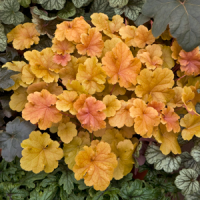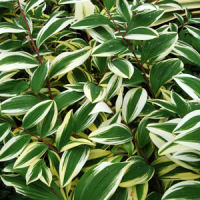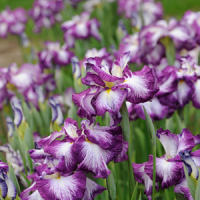PERENNIALS TOLERANT OF ACID SOILS
Actaea/Cimicifuga (Baneberry, Bugbane)
Anemonella thalictroides (Rue Anemone)
Arctostaphylos uva-ursi (Common Bearberry) * – evergreen shrub
Arisaema triphyllum (Jack in the Pulpit)
Arrhenatherum elatius subsp. bulbosum (Bulbous Oat Grass)
Asclepias incarnata (Swamp Milkweed)
Asclepias tuberosa (Butterfly Milkweed)
Astilbe (False Spirea)
Athyrium filix-femina (Lady Fern)
Baptisia (Wild Indigo)
Calla palustris (Wild Calla)
Callirhoe involucrata (Wine Cups)
Caltha palustris (Marsh Marigold)
Carex pensylvanica (Pennsylvania Sedge)
Caulophyllum thalictroides (Blue Cohosh)
Chelone (Turtlehead)
Chimaphila umbellata (Pipsissewa) *
Claytonia (Spring Beauty)
Clethra (Summersweet) – tender shrub
Clintonia borealis (Bluebead Lily) *
Convallaria majalis (Lily of the Valley)
Coptis groenlandica (Goldthread) *
Cornus canadensis (Bunchberry) *
Cypripedium calceolus (Yellow Lady Slipper)
Cypripedium reginae (Showy Lady Slipper) *
Dennstaedtia punctilobula (Hay-scented Fern)
Dicentra (Bleeding Heart)
Digitalis (Foxglove) – biennial
Epigaea repens (Trailing Arbutus) * – evergreen shrub
Epimedium (Barrenwort)
Fragaria virginiana (Wild Strawberry)
Gaultheria procumbens (Wintergreen) * – evergreen shrub
Gentiana andrewsii (Closed Gentian)
Gillenia trifoliata/Porteranthus trifoliatus (Bowman’s Root)
Goodyera (Rattlesnake Plantain) *
Hepatica americana (Round-lobed Liverwort) *
Heuchera (Coral Bell)
Iris (Louisiana Iris) *
Iris cristata (Crested Dwarf Iris)
Iris ensata (Japanese Iris) *
Linnaea borealis (Twinflower) * – evergreen subshrub
Lilium (Lily) – Oriental cultivars *
Lupinus perennis (Wild Lupine)
Luzula sylvatica (Greater Woodrush)
Maianthemum canadense (Canada Mayflower) *
Matteuccia struthiopteris (Ostrich Fern) – aggressive spreader
Mertensia virginica (Virginia Bluebells)
Mitchella repens (Partridge Berry) * – trailing evergreen vine
Mitella diphylla (Bishop’s Cap)
Onoclea sensibilis (Sensitive Fern)
Osmunda cinnamomea (Cinnamon Fern)
Osmunda claytoniana (Interrupted Fern)
Osmunda regalis (Royal Fern)
Packera aurea/Senecio aureus (Golden Ragwort)
Phlox divaricata (Woodland Phlox)
Phlox pilosa (Prairie Phlox)
Phlox stolonifera (Creeping Phlox)
Podophyllum peltatum (Mayapple)
Polygala paucifolia (Fringed Milkwort) *
Polygonatum (Solomon’s Seal)
Potentilla tridentata/Sibbaldiopsis tridentata (Wineleaf Cinquefoil)
Pyrola (Wintergreen) *
Smilacina racemosa (False Solomon’s Seal)
Thalictrum dioicum (Early Meadow Rue)
Tiarella (Foamflower)
Trientalis borealis (Starflower) *
Trillium undulatum (Painted Trillium)
Viola pedata (Bird’s-foot Violet) *
Waldsteinia fragarioides/Geum fragarioides (Barren Strawberry) *
Those marked * require acid soil
Guideline For Lowering Soil pH
The actual application rate depends on a complex combination of soil characteristics like mineralogy, soil texture and organic matter, all of which determine the soil’s buffering capacity. Therefore, a soil test should be conducted to determine actual rate for each site.
That being said, the following general recommendation will give you an idea as to the amount of sulphur required in most situations. The approximate amount of sulphur needed to lower the pH of an eight inch layer of soil from 7.0 to 5.5 is 1.2 – 3.5 lbs. per 100 sq. ft. To lower the pH from 6.5 – 5.5 would require approximately .8 – 2.4 lbs. of sulphur per 100 sq. ft.
1/17



